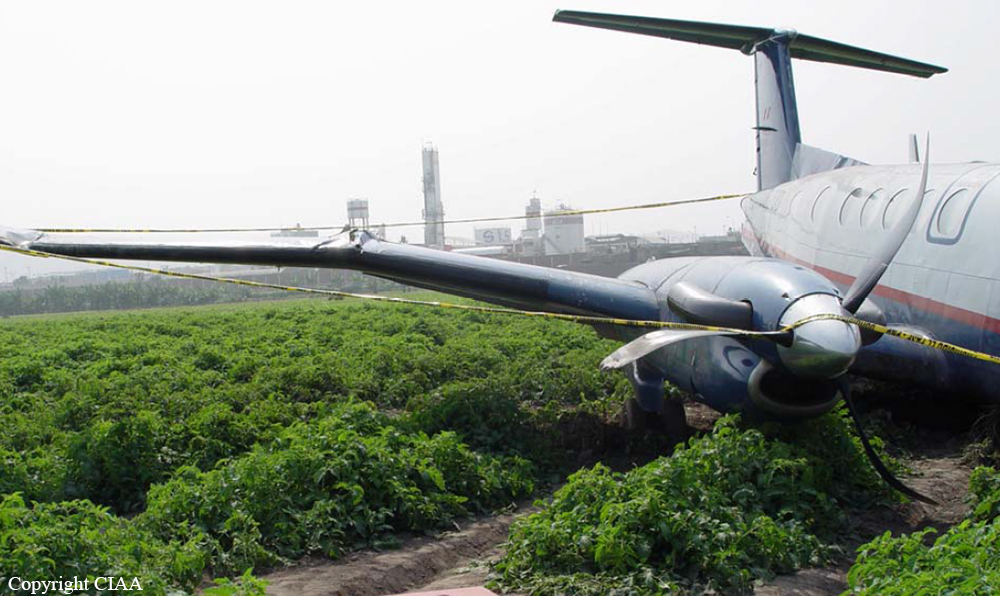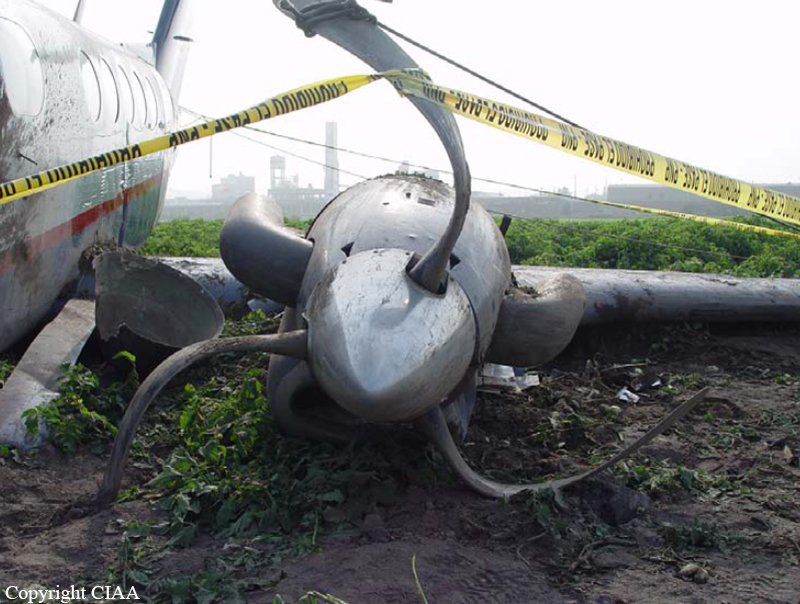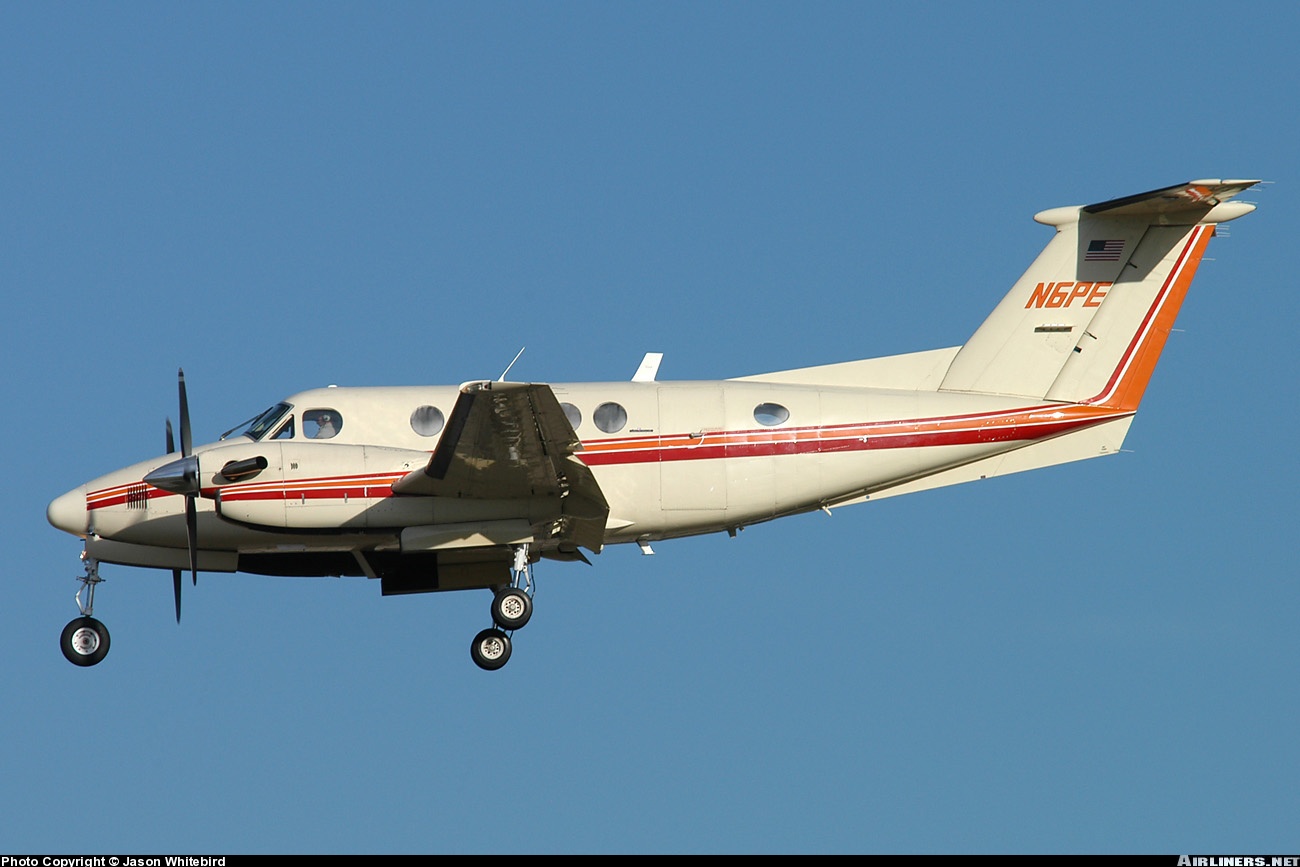Country
Crash of a Beechcraft B200 Super King Air in Lima
Date & Time:
Apr 18, 2005 at 1715 LT
Registration:
OB-1700
Survivors:
Yes
Schedule:
Chagual – Lima
MSN:
BB-214
YOM:
1977
Crew on board:
2
Crew fatalities:
Pax on board:
10
Pax fatalities:
Other fatalities:
Total fatalities:
0
Aircraft flight hours:
23723
Circumstances:
En route from Chagual to Lima, at a distance of of 25 miles from Lima-Callao-Jorge Chávez Airport, the fuel pressure dropped and the left engine stopped. The crew continued the descent to Lima when, on final, the right engine failed as well. Both propellers were feathered and the crew attempted an emergency landing in an open field. The aircraft came to rest 3,5 km from the runway threshold. All 12 occupants escaped uninjured while the aircraft was damaged beyond repair.
Probable cause:
Operation with four consecutive flights made by the same crew to Chagual aerodrome (an aerodrome that demands a high alertness and situational awareness due to difficult topographical conditions), a long and exhausting day flying and working together with the multiple functions performed by the technical crew (dispatcher, payer, loader, cabin crew) probably decreased the performance and capacity of the technical crew and safety. Poor planning on the part of the Operations and Sales Management of the Aero Condor Company Charter, by not providing the NOTAM which showed the lack of JET A1 fuel in Trujillo causing programming, operational and logistic difficulties.
Final Report:




Crash of a Beechcraft 200 Super King Air in Bayview
Date & Time:
Dec 10, 2004 at 1250 LT
Registration:
N648KA
Survivors:
Yes
Schedule:
Bayview - Houston
MSN:
BB-648
YOM:
1980
Crew on board:
1
Crew fatalities:
Pax on board:
5
Pax fatalities:
Other fatalities:
Total fatalities:
0
Captain / Total hours on type:
400.00
Aircraft flight hours:
6532
Circumstances:
While attempting to depart from the 3,500-foot long grass airstrip with a 14 knot quartering tailwind, the 5,800-hour pilot reported that at an airspeed of approximately 95 knots, "the airplane yawed left and rolled left abruptly as the aircraft came off the ground briefly." The airplane settled back onto the ground, before again climbing back into the air approximately 20 degrees left of the runway heading. Subsequently, the airplane’s landing gear struck tree tops before it impacted the ground. A passenger added that he "noticed the flaps were up during takeoff." Approximately three minutes after the accident, a weather reporting station located 5.6 nautical miles southwest of the accident site reported wind from 010 degrees at 14 knots. Examination of the engines revealed rotational scoring throughout the first and second stage turbines. No mechanical anomalies were observed.
Probable cause:
The pilot's failure to maintain directional control as result of his improper runway selection for takeoff. A contributing factor was the prevailing right quartering tailwind.
Final Report:
Crash of a Beechcraft B200 Super King Air in Tulsa
Date & Time:
Dec 9, 2004 at 1831 LT
Registration:
N6PE
Survivors:
Yes
Schedule:
La Crosse – Tulsa
MSN:
BB-856
YOM:
1981
Crew on board:
1
Crew fatalities:
Pax on board:
0
Pax fatalities:
Other fatalities:
Total fatalities:
0
Captain / Total hours on type:
469.00
Aircraft flight hours:
3084
Circumstances:
The 2,100-hour instrument-rated private pilot stated that prior to departure for a 507 nautical mile cross-country flight, the fuel gauges indicated approximately 800 pounds of fuel on each side for a total of 1600 pounds; however, he did not visually check the amount of fuel that the tanks contained. During his approach to the destination airport, the right engine started to "sputter" before it finally quit. The pilot then "looked over at the fuel gauges and both tanks were showing empty." The left engine quit just a few moments later. The auto ignition installed in the airplane attempted to restart the engines. The engines restarted momentarily and then shut-off once more. The pilot declared an emergency and executed a forced landing onto a street below. After a hard landing onto the street, the right wing hit a telephone pole, and the left wing then hit several tree limbs before the airplane impacted a hill and came to a stop. The Federal Aviation Administration (FAA) inspector, who responded to the accident site, found the fuel transfer switch in the "right-crossfeed" position. The fuel system was examined and no leaks or anomalies were found. Approximately three-quarters of a gallon of unusable fuel was found in the right engine nacelle. Approximately four gallons (28 pounds) of usable fuel was found in the left engine nacelle.
Probable cause:
The loss of engine power due to fuel exhaustion as a result of the pilot's inadequate preflight and in-flight planning / preparation.
Final Report:


